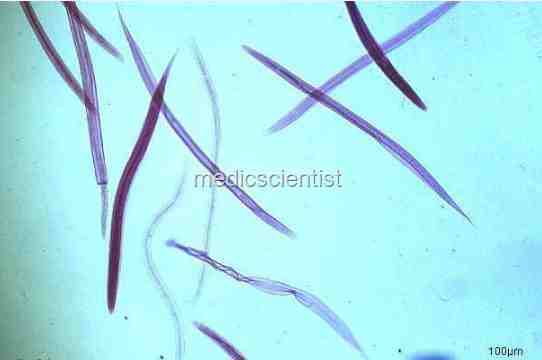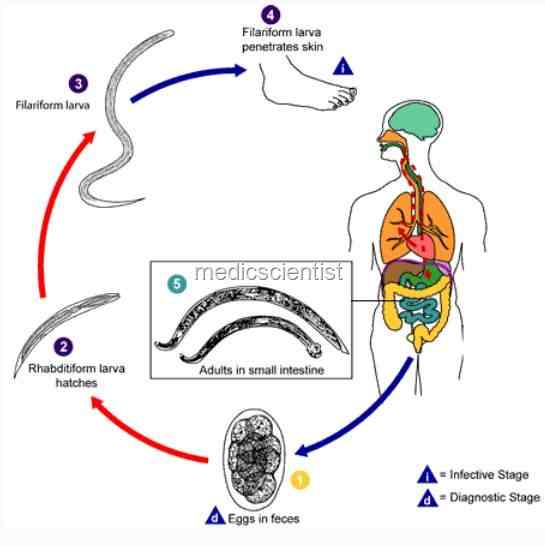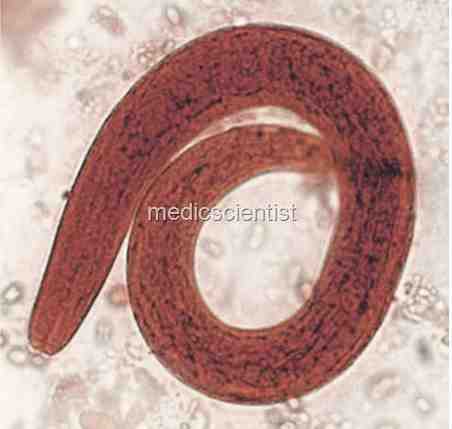ANCYLOSTOMA DUODENALE, NECATOR and STRONGYLOIDES STERCORALIS
Hookworm infections are common in the tropics and subtropics, Species of hookworm that commonly infests humans, causing ancylostomiasis; widely found in temperate regions. Ancylostoma caninum and Ancylostoma braziliense: Species of hookworm that infests dogs and cats and may cause cutaneous larva migrans in humans.
 |
| Ancylostoma Duodenale HOOKWORM |
- Sanitary practices allow for human fecal contamination of the soil.
- There is contact of human skin with contaminated soil.
- The soil is appropriately damp to favor larval survival.
AMERICANUS (HOOKWORM)
- It is found in hot humid regions.
- The infective stage is larva. The route of infection is through the skin.
- The larva passes through lungs also.
- It is also found in jejunal mucosa.
- Adult worm size is about 1 cm.
- Incubation period is 50 – 100 days.
- It can survive for 2-8 years.
- Chief symptoms are iron deficiency anaemia.
CLINICAL MANIFESTATIONS —
- Acute gastrointestinal symptoms
- Dermal penetration by infecting larvae
- Chronic nutritional impairments
- Transpulmonary passage
 |
| Ancylostoma Duodenale HOOKWORM Life cycle |
Diagnosis of HOOKWORM
- • By eggs in fresh stool and larva in old stool.
Treatment of HOOKWORM
- Mebendazole,
- Pyrantel pamoate,
- Albendazole
 |
| STRONGYLOIDESSTERCORALIS |
- It is found in hot and humid regions. ihe infective stage is filariform larva.
- Route of infection is percutaneous i.e. through the skin or autoinfection.
- The worms reside in the small bowel mucosa. Adult worm size is 2 mm.
- There is pulmonary passage of larva also. Incubation period is 15 – 30 days.
- Chief symptoms are gastrointestinal malabsorption or sepsis.
 |
| STRONGYLOIDESSTERCORALIS Life cycle |
Diagnosis of STRONGYLOIDES STERCORALIS
- · By larva in stool or duodenal aspirate and even sputum.
Treatment of STRONGYLOIDES STERCORALIS
- Ivermectin,
- Albendazole,
- Thiabendazole.

